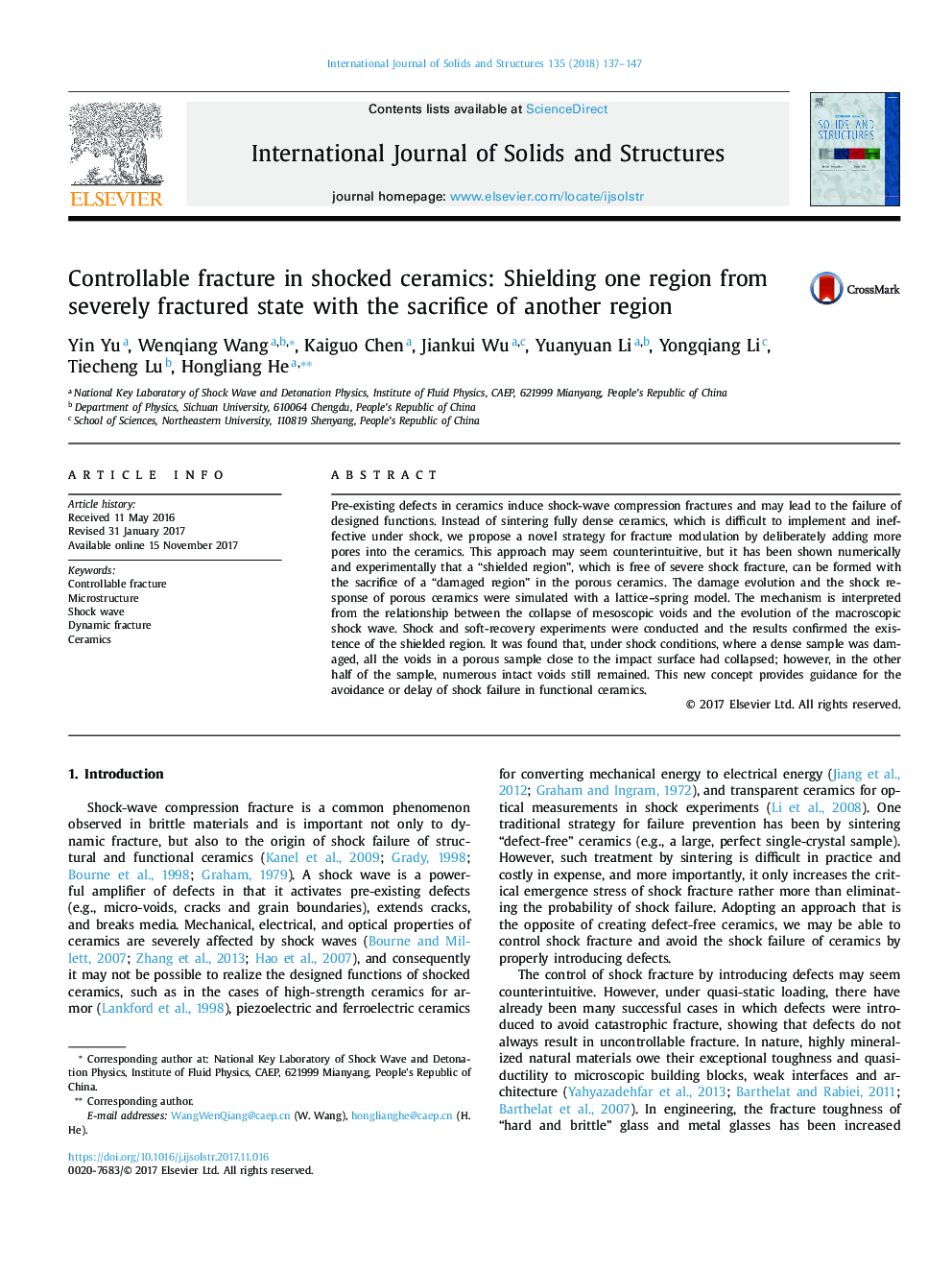| Article ID | Journal | Published Year | Pages | File Type |
|---|---|---|---|---|
| 6748416 | International Journal of Solids and Structures | 2018 | 11 Pages |
Abstract
Pre-existing defects in ceramics induce shock-wave compression fractures and may lead to the failure of designed functions. Instead of sintering fully dense ceramics, which is difficult to implement and ineffective under shock, we propose a novel strategy for fracture modulation by deliberately adding more pores into the ceramics. This approach may seem counterintuitive, but it has been shown numerically and experimentally that a “shielded region”, which is free of severe shock fracture, can be formed with the sacrifice of a “damaged region” in the porous ceramics. The damage evolution and the shock response of porous ceramics were simulated with a lattice-spring model. The mechanism is interpreted from the relationship between the collapse of mesoscopic voids and the evolution of the macroscopic shock wave. Shock and soft-recovery experiments were conducted and the results confirmed the existence of the shielded region. It was found that, under shock conditions, where a dense sample was damaged, all the voids in a porous sample close to the impact surface had collapsed; however, in the other half of the sample, numerous intact voids still remained. This new concept provides guidance for the avoidance or delay of shock failure in functional ceramics.
Related Topics
Physical Sciences and Engineering
Engineering
Civil and Structural Engineering
Authors
Yu Yin, Wang Wenqiang, Chen Kaiguo, Wu Jiankui, Li Yuanyuan, Li Yongqiang, Lu Tiecheng, He Hongliang,
